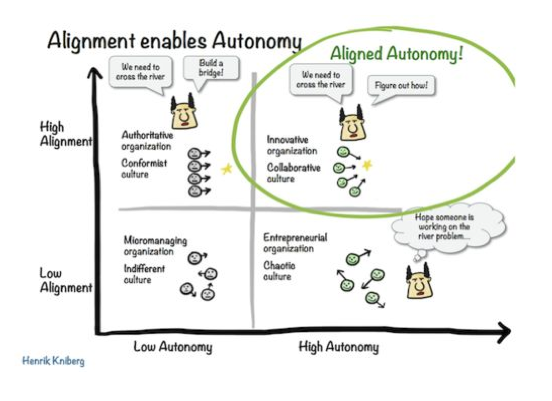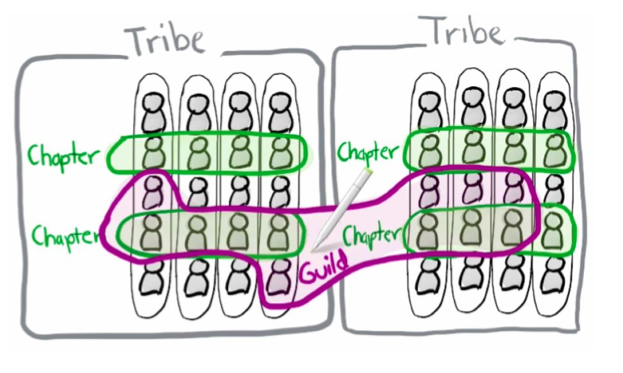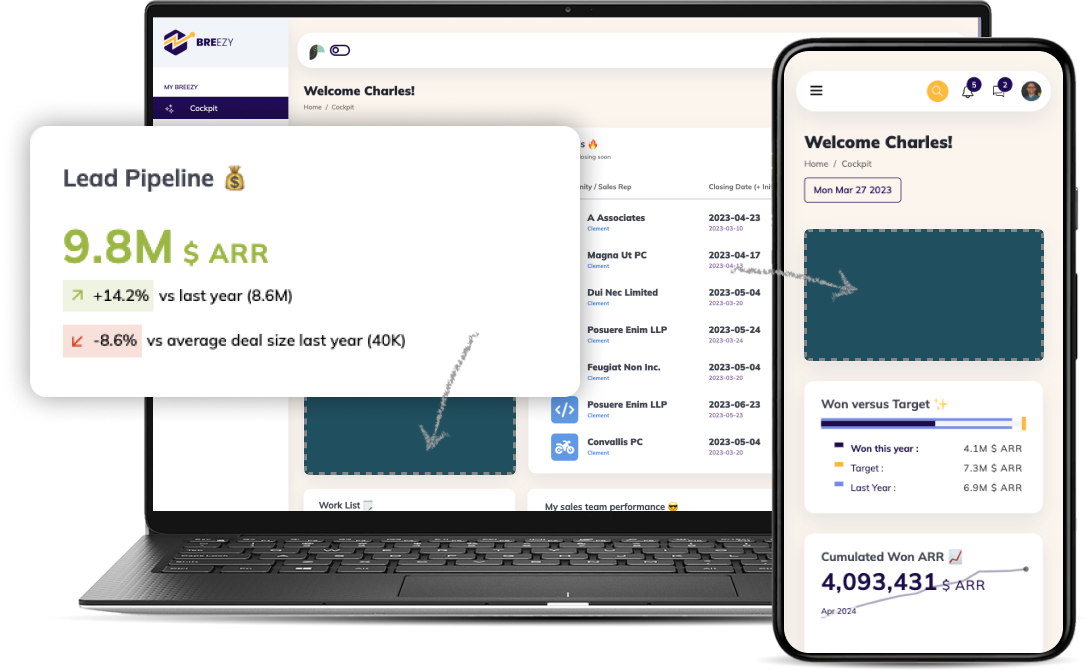Spotify is the perfect example of a large company that's managed to maintain its agility through scale. In 8 years, their workforce grew to exceed 1,500 employees, and the music giant has maintained its drive and ability to innovate. Their employee's resiliency, success, and user satisfaction are all proof that agile start-up management can be applied to any company, no matter the size.

Spotify faced a challenge that virtually any company will face after initial success: scale without losing agility. Spotify's product team model can largely be attributed to their success, and that's why we're looking more deeply at some of its most important principles in this article.
The Spotify model for Agility at Scale
The Spotify model emphasizes culture and network and has been the driving force behind their teams' innovation and productivity. The model focuses on autonomy, communication, accountability, and quality.
This model isn't actually a framework, as Spotify's agile/lean management coach Henrik Kniberg noted. Rather, it represents Spotify's view on scaling from both a technical and cultural perspective and is one example of organizing multiple teams in a product development organization that stresses the importance of culture and networks. the need for culture and networks.
AUTONOMY ALIGNED IN “AGILITY”

Spotify aligns with much of Kniberg's (along with other experts') recommendations around organizing into small teams called squads. These squads are composed of 4 to 6 people that are able to be more innovative and fast-acting versus larger teams.
Squads are responsible for the development of a given project from A to Z. They develop, test, and deploy their solutions autonomously and are not required to submit decisions to management. This level of autonomy frees Spotify's employees from hierarchical rigidities and is proven to be highly motivating. A given squad decides what it needs to do to address a problem, how to develop it, and when to act.
In exchange for autonomy, squad objectives must be aligned with the company’s overall strategy, but also other squads’ priorities and objectives.
Autonomy and alignment can therefore not be seen as two extremes of the same scale, but rather as two dimensions: the more important the alignment, the more different squads can be autonomous.
AN ORGANIC ORGANIZATION: SQUADS, TRIBES, CHAPTERS, AND GUILDS
Spotify's squads are then divided into “tribes” according to the projects they are working on. Within a tribe, “chapters” are made up of people with the same skills or functions.
A chapter has a coach who encourages squads to progress and share best practices with one another. Chapters meet regularly to discuss the problems they are facing and the solutions they're coming up with.
In terms of skills, this type of organization gives employees more flexibility to move from squad to squad without ever changing coaches, and allows Spotify to realize economies of scale.
On top of this, Spotify institutes “guilds”, which bring together people who share the same interests. Guilds do things like organizing conferences around topics of interest. Everyone is free to create, join, or leave a guild at any time during their tenure at the company.
Let's illustrate this with an example: you are a data analyst in charge of implementing a DataViz solution. So, you enter a squad with complementary profiles to tackle this project. In this squad, you join a tribe that is in charge of your company’s digital transformation (which has several squads with projects similar to yours_.
In order to keep your skills up to date and continually exchange knowledge, you belong to a chapter made up of other data analysts. In addition, a coach follows you and advises you whenever necessary.
Finally, you belong to a guild that deals with Agile Project Management. This allows you to add other dimensions to your skillse and makes you feel even more valued in your squad.

AUTONOMY, THE DRIVING FORCE BEHIND INNOVATION
Chapters and guilds are particularly powerful in the sense that they've enabled Spotify to create (and maintain) a community and corporate culture despite the high levels of autonomy granted to their employees. And, to reiterate, this autonomy makes it possible to free employees from hierarchical rigidities and keep them motivated.
Beyond culture, Spotify’s vision is to improve operational efficiency, which is very clearly reflected in the way they launch new products and features. Their goal is to make it very easy to create new features and to do them as frequently as possible, which is one of the reasons their platform is so adored by their global user base. Spotify completely changed its application’s structure so that squads were able to update the functionalities for which they were responsible without consulting other teams.
A squad belongs to one of three categories: functionality, client application, or infrastructure. The functional squads, for example, are responsible for developing the search or recommendation engine. Applications squads are specialized in one of the Web, Mobile, or Desktop platforms. The architecture squads develop the tools and methods that the first two categories need to work on, such as A/B testing.
Spotify's primary strengths are its agility, the adaptability of employees despite a volatile market, and the company's powerful structure. Spotify has become and continues to be, an excellent example of strong horizontal management.



